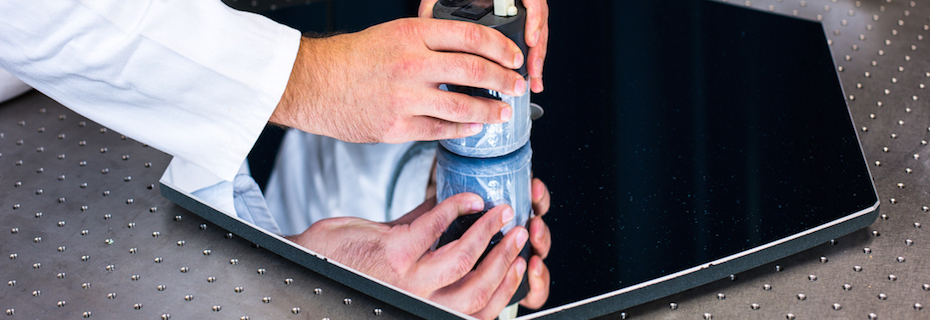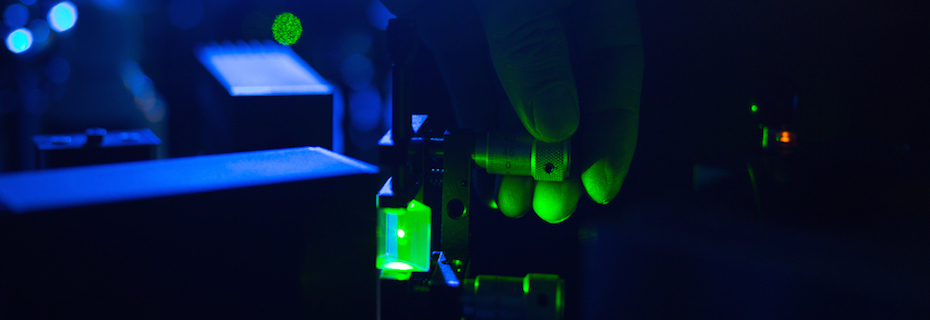Experimental particle physics
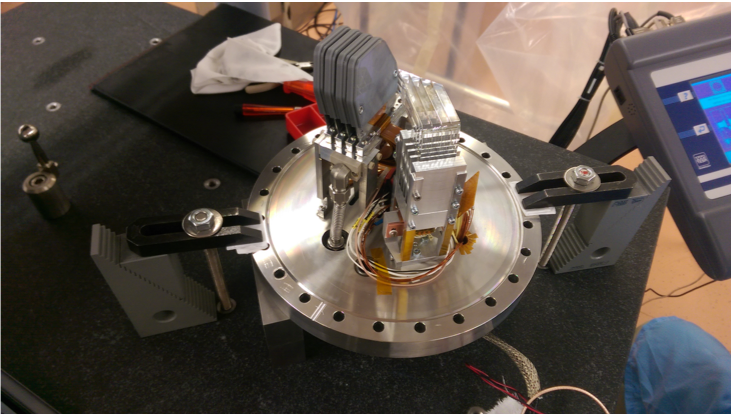
The particle physics group at JLO is mainly bound to the CERN-ATLAS experiment at the LHC accelerator at CERN. While in the past JLO contributed to the CERN facilities with several deliveries of optical technologies, today the the involvement is of a more profound nature.
First, the group is heavily involved in the development of a time-of-flight detector (Opt. Express 2020, 28, 19783; Opt. Express 2023, 31, 3998), primarily, but not only for the ATLAS Forward Proton (AFP) detector. The group intends to use its knowledge of optical technologies to develop a radiation-resistant time-of-flight (ToF) detector with high time resolution (~10-20 ps), which will allow to study pulse generated signals over a very noisy background. Such detector can be implemented in a wide variety of industrial or medical applications (LIDAR, diagnostic devices), but also in detection devices for particle physics. New configurations (optical, electronic and mechanical) of the ToF detector with the resolution of tens of picoseconds or better will are being proposed and studied in detail, also using computer simulations in Geant4. Detector parameters are measured and optimized to obtain the best possible time and also space resolution, and the radiation resistance of the detector will be verified in order to allow use in the environment of the high-energy physics experiments - ATLAS detector (CERN) and MPD detector at NICA (JINR). Proposed upgrade of the CERN-ATLAS detector (ATLAS Forward Proton, AFP) will also allow searches for signs of new physics beyond the standard model (BSM) of the elementary particles. Picosecond timing resolution will allow to suppress the background that will naturally increase with the planned increase of the LHC luminosity that should allow measurement of these extremely rare events. High time resolution will be achieved by carefully designed optical part and cutting-edge electronics developed within CERN-ATLAS collaboration (especially University of Alberta, Stony Brook University NY, University of Texas at Arlington). Closely related to the time-of-flight detector is the work of our team members on the data analysis of diffraction processes at the LHC, where one or both protons remain intact after the collision while part of their energy can be transferred to a production of particles in the acceptance of the central ATLAS detector. These events probe non-perturbative quantum chromodynamics and various diffraction models and are an important ground for BSM searches.
Another part of the group is involved in the analysis of the LHC data related to the heaviest member of the quark family - the top quark (Nucl. Instrum. Methods Phys. Res. Sect. A 2018, 900, 84). Recently, the main attention is focused on measurement of the differential cross-section of the top quark at the energy of 13 TeV as well as to the search for the top quark pair production in proton-lead collisions delivered by the LHC in dedicated runs. Top quark is an important signal probing predictions of the perturbative quantum chromodynamics at different levels of precision, with measured data constraining model’s parameters to simulate this often important background for other BSM searches.
The group takes part in the ATLAS upgrade of the Inner Tracker (ITk) detector, namely the silicon strip detector during test beam campaigns (J. Instrum. 2024, 19, C02039) and data analysis and simulation. The group has also been involved in the calibration of hadronic final states (jets) in the ATLAS detector and studies the statistical, analysis and reconstruction techniques using standalone privately simulated samples. The group further plans to contribute to analysis prospects for the planned Future Circular Collider (FCC). Recently, the group has started to increasingly contribute also to the analyses and simulations related to projects H1, CTA, and FAST.
In the framework of the CERN-ATLAS collaboration to group contributed to a number of breakthrough experiments like, e.g., the Discovery of the Higgs boson (Science 2012, 338, 1576), or the evidence of the quantum-mechanical effect of light-by-light scattering (Nat. Phys. 2017, 13, 852).
Latest publications of the group
-
Vacula, M; Horvath, P; Chytka, L; Daumiller, K; Engel, R; Hrabovsky, M; Jilek, V; Mandat, D; Mathes, HJ; Michal, S; Nozka, L; Palatka, M; Pech, M; Schäfer, CM; Schovanek, P; Svozilikova, Z: Development of a calibration light source based on a unique modification of an integrating sphere, Opt. Laser Technol. 187 112766 (2025).
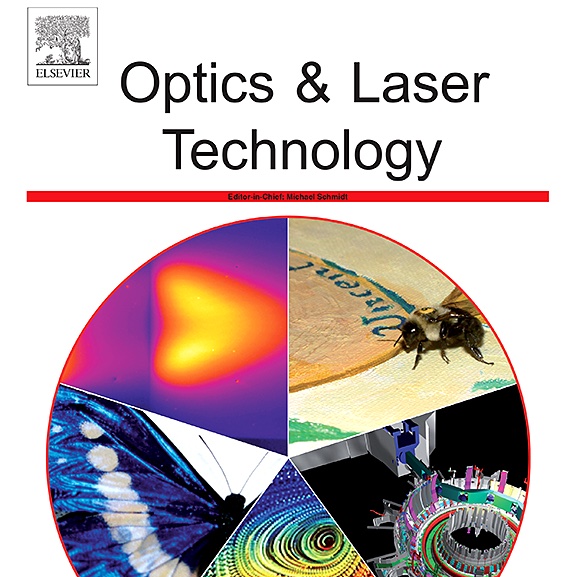
-
Nozka, L; Ambroziak, R; Krajczewski, J: Metal nitrides as an alternative material for SERS platforms: TiN and beyond, Mater. Sci. Semicond. Process 194 109555 (2025).

-
Alispach, C; Araudo, A; Balbo, M; Beshley, V; Biland, A; Blazek, J; Borkowski, J; Bulik, T; Cadoux, F; Casanova, S; Christov, A; Chudoba, J; Chytka, L; Dedic, P; della Volpe, D; Favre, Y; Garczarczyk, M; Gibaud, L; Gieras, T; Hamal, P; Heller, M; Hrabovsky, M; Janecek, P; Jelínek, M; Jílek, V; Jurysek, J; Karas, ZV; Lacave, B; Lyard, E; Mach, E; Mandát, D; Marek, W; Michal, S; Michalowski, J; Moderski, R; Montaruli, T; Muraczewski, A; Muthyala, S; Müller, AL; Nagai, A; Nalewajski, K; Neise, D; Niemiec, J; Nikolajuk, M; Novotny, V; Ostrowski, M; Palatka, M; Pech, M; Prouza, M; Rajda, P; Schovanek, P; Seweryn, K; Sliusar, V; Stawarz, L; Sternberger, R; St: The SST-1M imaging atmospheric Cherenkov telescope for gamma-ray astrophysics, J. Cosmol. Astropart. Phys. (2) 47 (2025).

-
Michalowska, A; Szymanska, A; Ambroziak, R; Nozka, L; Vaclavek, L; Tomastik, J; Turczyniak-Surdacka, S; Krajczewski, J: Improved SERS activity of TiN microstructures by surface modification with Au, J. Mater. Sci. 59 (36) , 16918 - 16931 (2024).
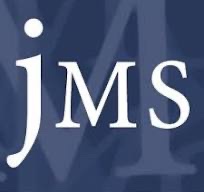
-
Kvita, J: Boosted and semi-boosted all-hadronic <i>t</i>(<i>t</i>)over-bar reconstruction performance on kinematic variables for selected BSM models using a 2D extension of the BUMPHUNTER algorithm, Int. J. Mod. Phys. A 39 (11N12) 2430002 (2024).
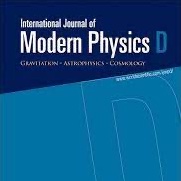
Latest publications of ATLAS Collaboration (including JLO members)
-
Aad, G et al. (Baron, P.; Cerny, K.; Hrabovsky, M.; Kvita, J.; Nozka, L.; Privara, R.): Differential cross-section measurements of Higgs boson production in the H → τ<SUP>+</SUP>τ<SUP>-</SUP> decay channel in pp collisions at √s=13 TeV with the ATLAS detector, J. High Energy Phys. (3) 10 (2025).
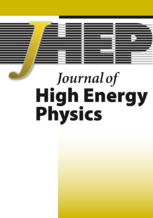
-
Aad, G et al. (Baron, P.; Cerny, K.; Hrabovsky, M.; Kvita, J.; Nozka, L.; Privara, R.): Configuration, Performance, and Commissioning of the ATLAS b-jet Triggers for the 2022 and 2023 LHC data-taking periods, J. Instrum. 20 (3) 2 (2025).

-
Aad, G et al. (Baron, P.; Cerny, K.; Hrabovsky, M.; Kvita, J.; Nozka, L.; Privara, R.): Measurement of the associated production of a top-antitop-quark pair and a Higgs boson decaying into a b(b)over-bar pair in pp collisions at √s=13 TeV using the ATLAS detector at the LHC, Eur. Phys. J. C 85 (2) 210 (2025).
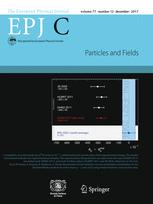
-
Aad, G et al. (Baron, P.; Cerny, K.; Hrabovsky, M.; Kvita, J.; Nozka, L.; Privara, R.): Search for triple Higgs boson production in the 6b final state using pp collisions at √s=13 TeV with the ATLAS detector, Phys. Rev. D 111 (3) 32006 (2025).

-
Aad, G et al. (Baron, P.; Cerny, K.; Hrabovsky, M.; Kvita, J.; Nozka, L.; Privara, R.): Search for same-charge top-quark pair production in pp collisions at √s=13 TeV with the ATLAS detector, J. High Energy Phys. (2) 84 (2025).

Group of Experimental Particle Physics (in alphabetical order)
Mgr. Petr BAROŇ, Ph.D.
postdoc

particle physics
experiment CERN-ATLAS
RNDr. Karel ČERNÝ, Ph.D.
assistant professor

particle physics
experiments CERN-ATLAS and H1
Ing. Ladislav CHYTKA, Ph.D.
researcher / head of the group
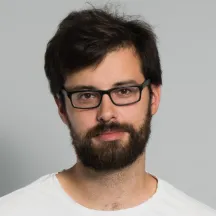
optoelectronics
construction and calibration of detection devices
CTA Collaboration
Mgr. Petr HAMAL, Ph.D.
researcher

astroparticle physics
FAST collaboration
prof. RNDr. Miroslav HRABOVSKÝ, DrSc.
professor / head of the group
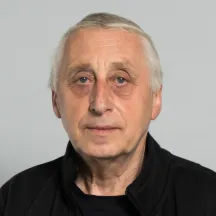
classical wave and statistical optics
management of JLO participation in large collaborations
management of JLO contract research
Bc. František HRUBÝ
professional / M.Sc. Student

particle physics
simulations for WCTE and HyperK experiments
Bc. Adam JÜTTNER
professional / Bc. Student

optoelectronics
photomultiplier testing for the HyperK experiment
Mgr. Jiří KVITA, Ph.D.
assistant professor / head of the group

particle physics
physics of top quark in CENR-ATLAS experiment
WCTE and HyperK experiments
JLO social networks editor
doc. Mgr. Libor NOŽKA, Ph.D.
researcher / associate professor

optical technologies for particle physics
physics of surfaces and layers
elipsometry
microscopy
Bc. Marie PRINCOVÁ
professional / M.Sc. Student

particle physics
WCTE experiment
Mgr. Radek PŘÍVARA
Ph.D. student

particle physics
CERN-ATLAS experiment
silicon particle detectors
prof. Jan ŘÍDKÝ, DrSc.
professor

particle physics
CERN-ATLAS experiment
collaboration Pierre Auger
Bc. Jan STRAKA
professional / M.Sc. Student

particle physics
CERN-ATLAS experiment
Vladimír URBÁŠEK
professional

optoelectronics
development of specialized electronics circuits

